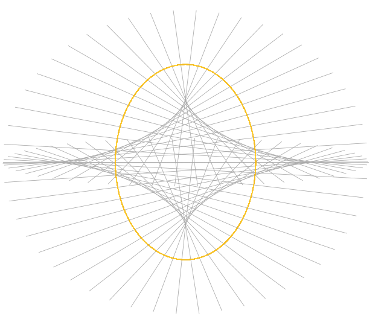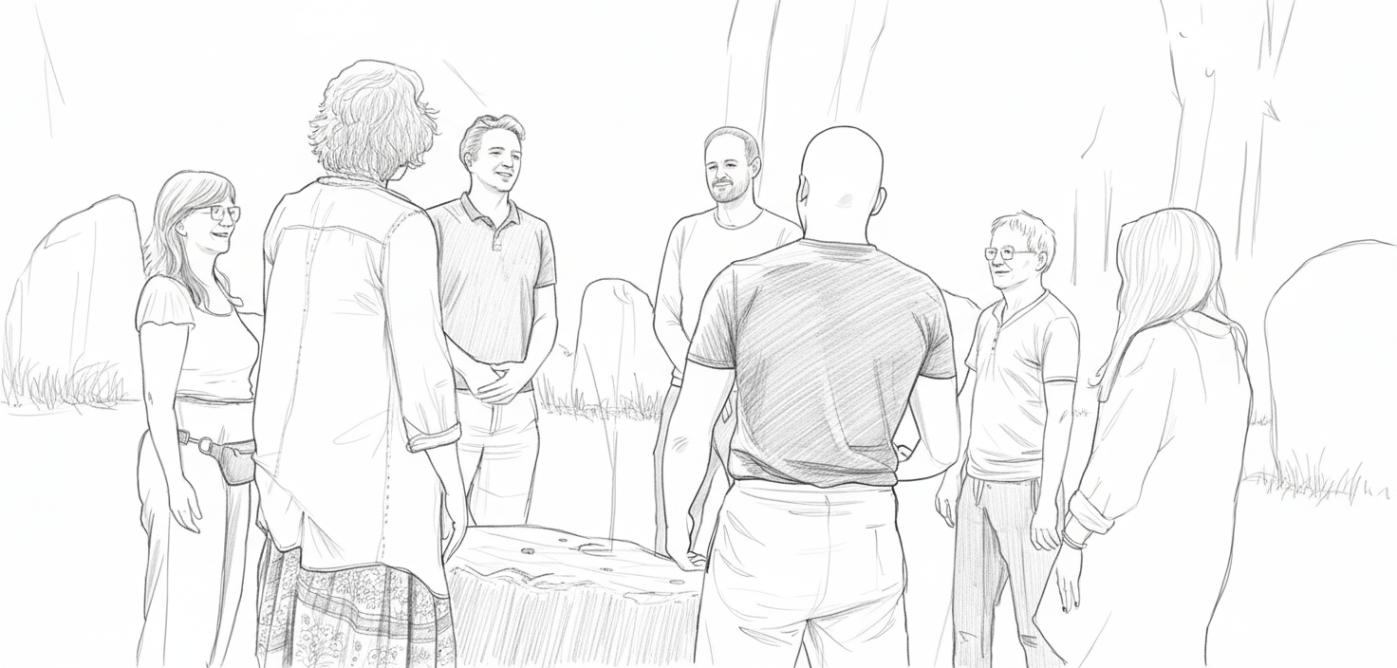Dmitrij Achelrod PhD
Contributing Author
Christopher Kabakis
Dmitrij Achelrod PhD
Contributing Author
Christopher Kabakis
Introduction
In recent years, there has been a growing interest in alternative therapies and practices for personal growth and healing. Two powerful modalities that have captured the attention of seekers on the path to self-discovery are breathwork and psychedelics, particularly in the context of group retreats. These two approaches offer unique avenues for exploring the depths of one’s consciousness, potentially facilitating profound personal transformation. In this article, we will compare and contrast breathwork and psychedelics, examining when each might be indicated and how they can complement each other, particularly in a group retreat setting.
Breathwork – Breathing towards Wholeness
We begin life with our first inhale, and end it with our last exhale. We breathe around 18,000 times a day, often even without consciously noticing it. We can survive 3 weeks without food, 3 days without water, but only three minutes without breathing. It wouldn’t be exaggerated to claim that the breath is the fuel for our life, the most vital source of our physical survival. No wonder the study and mastery of breath has always attracted our attention: Breathwork, in its various forms, has been utilized across cultures and traditions for centuries as a means of achieving altered states of consciousness, inner healing, and spiritual awakening. For example, in the millennia-old yogic tradition, Pranayama breathing techniques were designed to master the respiratory process while recognizing the connection between the breath, the mind, and emotions. In more recent times, holotropic breathwork, developed by psychiatrist Dr. Stanislav Grof and his late wife Christina as a substitute for LSD when it became illegal at the end of the 1960s, is a specific form of breathwork that has re-gained popularity.
Breathwork and similar foundational methods, like the one developed by Leonard Orr, involve controlled and rhythmic breathing patterns that can induce altered states of consciousness. Participants often lie down, close their eyes, and focus on their breath, which is intentionally accelerated and usually accompanied by invigorating music. Instead of pausing after an inhale or an exhale like in regular breathing, fast, strong inhales and fast exhales alternate without pause. Within as little as 15 minutes, this process of accelerated and deeper breathing can lead to a variety of experiences, including intense emotional releases, vivid imagery, spiritual or mystical experiences and a sense of expanded awareness. In Grof’s work, hundreds of accounts of people reliving past memories are reported, in particular early childhood and even one’s own birth (see Grof’s theory of the “perinatal matrix”.). Holotropic breathwork has helped Grof lay the foundations for much of what we today know about the field of Transpersonal Psychology. Interestingly, Leonard Orr independently developed his breathing method around the same time as Grof and called it “Rebirthing Breathwork” – again hinting at the fact that birth (and even death) can be re-experienced during breathwork.
What causes these astounding reactions and altered states of consciousness?
There are numerous breathing techniques besides the one developed by Stan Grof, like Wim Hof breathing, conscious-connected breathing, shamanic breathwork, neurodynamic breathing, biodynamic breathwork. Regardless of all these versatile names and their slightly differing inhalation and exhalation techniques / belief systems / frameworks / settings, their effect on our bodies are almost the same. There are several physiological shifts happening when you are engaging in deep and circular breathwork. The rapid and deep breathing increases oxygen levels in the blood while decreasing carbon dioxide levels. This usually leads to changes in the blood’s pH level, making it more alkaline (or less acidic). Consequently, the change in blood gases is believed to influence brain activity. The decreased carbon dioxide levels can lead to a constriction of blood vessels in the brain, entailing reduced blood flow particularly to the cortex and frontal cortical regions. The latter region is associated with cognitive and meta-cognitive filtering of one’s experience – so breathwork might down-regulate our “rational minds” temporarily, allowing other parts of our brain to gain more dominance in our mental processing. A nerdy side note: while a lot of breathwork providers claim that accelerated breathwork tunes down the Default Mode Network (DMN) – a brain region that became famous for “hosting our Egos” and that can be temporarily deactivated by psychedelics like psilocybin mushrooms – there is no scientific evidence yet for that claim.
At the same time, intense breathing can activate the sympathetic nervous system, the body’s ‘fight or flight’ response, increasing heart rate, heightening alertness, and pushing energy levels. The physical exertion and controlled hyperventilation can trigger the release of endorphins, the body’s natural painkillers, which may contribute to a feeling of euphoria or well-being. Following the intense breathing session, there’s often a period of relaxation and stillness. Here, the parasympathetic nervous system kicks in, responsible for rest and digestion, helping to balance the earlier sympathetic activation.
On a psychological level, the key principle behind breathwork is the belief that the psyche contains the potential for healing and transformation, and that altered states of consciousness can access this potential by lowering the holding capacity of the rational mind (the “chief executive officer”). When the CEO is disabled, voices, emotions and energies from the body and the emotional parts of the brain can come to the surface, often in a cathartic manner. This surfacing, previously unprocessed material or movement impulses (including, for example, trembling, intense shaking, shouting) can be processed, worked through and eventually be let go off. We become whole again by integrating into our body-mind systems what has been suppressed and ostracized from our conscious awareness. This is why Grof named his technique that way: “holotropic” comes from the ancient Greek “holos” (=meaning “whole”) and “trepein” (=meaning “moving towards something”), i.e. moving towards wholeness.
When is Breathwork Helpful?
Breathwork is foremost a practice of leaning into “not knowing” – Grof believes that the human psyche can choose the most relevant experience that we need (the experience with the most “psychodynamic pressure”), but we cannot know in advance what the experience will be like. Having said that, breathwork can be beneficial in various circumstances:
- Trauma Healing: Breathwork can help individuals process and release deeply held trauma and emotional wounds. The altered state of consciousness can allow participants to revisit past experiences and gain new perspectives on them, leading to healing and integration. Grof viewed holotropic breathing as “an innovative form of experiential psychotherapy” that is capable of shedding light into our deepest abysses. However, breathwork is not only about trauma. Also people without trauma can benefit from breathwork.
- Self-Exploration: Many people turn to breathwork as a tool for self-discovery and personal growth. It can provide insights into one’s inner world, beliefs, and patterns of behavior, fostering self-awareness and personal transformation.
- Stress Reduction: Breathwork can serve as a powerful stress-reduction technique. The deep breathing and altered states induced by breathwork can promote relaxation, reduce anxiety, and restore a sense of inner calm.
- Spiritual Exploration: For those seeking a deeper connection to their spirituality, breathwork can facilitate mystical and transcendent experiences, providing a sense of unity and interconnectedness with the universe.
Can Breathwork be dangerous?
Breathwork may not be suitable for everyone, particularly those with certain medical or psychological conditions. It is important to consider the following factors:
- Psychiatric Conditions: Individuals with severe psychiatric disorders, such as schizophrenia or bipolar disorder, may be at risk of experiencing an exacerbation of symptoms during breathwork. It is crucial for such individuals to consult with a qualified mental health professional before attempting breathwork.
- Physiological Conditions: Certain medical conditions, such as cardiovascular issues (e.g. uncontrolled blood pressure), recent injury and surgery, or respiratory problems, may make it unsafe to engage in intensive breathwork practices. Likewise, breathwork should be avoided during pregnancy.
- Lack of Preparation: Breathwork can be intense and emotionally challenging. Without proper preparation and guidance, individuals may find themselves overwhelmed or disoriented during the experience.
- Lack of Integration: More often than not, people are not adequately taken care of after the breathwork experience. There are several factors that play a role here. For instance, due to time restrictions, breathwork organizers often do not grant enough time for the “landing” and integration after the breathing. Sometimes, people need hours to be in a condition stable enough to be “released into the world” again. Moreover, a large group size with too few or poorly trained facilitators can be problematic. This might result in facilitators not being able to appropriately support people individually that might have had traumas activated or are confused or emotionally shaken and in need of emotional support after (and during) the breathwork session. Also, a lack of integration on-site might leave people unsure what to make of their very profound or highly disturbing experiences. It’s not advisable to attend an intense breathwork session when the conditions are not right (i.e. enough well-trained facilitators on-site – best a 1:2 facilitator-to-participant-ratio) or too little time is planned for integration (you should reserve half-day at least).
When these factors are taken into account, breathwork can be a very safe practice.
Psychedelics in a Retreat Context: Exploring our Inner Cosmos
Psychedelics, such as psilocybin from certain mushrooms or truffles, peyote, or ayahuasca, have been used for centuries in various cultural and spiritual contexts. In recent years, there has been a resurgence of interest in psychedelics as tools for personal transformation and healing, often facilitated within the structured environment of psychedelic retreats. In Europe, the Netherlands have evolved as the epicenter of legal psilocybin-retreats.
Psychedelic retreats typically involve participants ingesting a psychedelic substance under the guidance of experienced facilitators. These retreats ideally provide a safe and supportive setting for individuals to explore their inner worlds and gain insights into their lives. The psychedelic experience often leads to profound revelations, emotional catharsis, and ineffable, mystical-type experiences that people often declare as the most profound experiences of their lives.
To learn more about the neuroscience and history of psychedelics, go here:
When is a Psychedelic Retreat Helpful?
People seek out psychedelic retreats for many different reasons, ranging from self-exploration to trauma-healing. There are stark similarities:
- Self-Exploration and Growth: Psychedelic experiences can offer deep insights into one’s psyche and life journey, including deep personal questions that also relate to people’s professional dilemmas. Many individuals turn to psychedelics as a means of self-exploration and personal growth, seeking answers to life’s existential questions. With the right preparation, framing and on-site support, intentional work can be performed and inner development can be catalyzed that would otherwise take much longer in traditional coaching, therapy or training contexts.
- Spiritual Awakening: Psychedelics have a long history of being used in spiritual and shamanic traditions. For those seeking a profound spiritual experience, an experience of (re-)connection to the “source” or ground of being, the divine or One-ness, the right psychedelic retreat conditions as well as the right mindset can open the possibility of access to a sense of the sacred through consciously and carefully induced altered states of consciousness.
- Healing trauma, addiction and other mental disorders: Psychedelics, when used in therapeutic contexts, have shown promise in helping individuals process and heal from trauma, including PTSD. The altered state of consciousness can allow participants to revisit traumatic memories from a new perspective. Ideally, the journeyers should be receiving emotional nourishment or resourcing from highly skilled facilitators or therapists.
- Addiction treatment: Furthermore, some studies have suggested that psychedelics, particularly psilocybin, can be effective in treating addiction (to substances like alcohol, nicotine or even heroin) by helping individuals break free from destructive patterns and gaining insight into the root causes of their addictive behaviors. The healing and integration that can happen under altered states of consciousness if the conditions are right (set & setting, preparation, in-session support and integration) are impressive.
Finally, psychedelics, especially psilocybin, have been demonstrated to be a highly promising pathway of treating treatment-resistant depression.
When is a Psychedelic Retreat Not Indicated?
Like with breathwork, a psychedelic retreat may not be suitable for everyone, and careful consideration should be given especially to certain clinical factors. Importantly, medications should be checked to avoid potentially dangerous interactions with the psychedelic substances.
- Mental Health Conditions: Individuals with a history of severe mental health conditions, such as schizophrenia or psychosis, may be at risk of experiencing exacerbated symptoms or psychological distress during a psychedelic experience. These individuals should seek guidance from mental health professionals and carefully weigh the risks and benefits. At Evolute Institute’s retreat programs like EvoSHIFT, every participant is carefully being screened by a medical doctor with psychotherapeutic training to make sure only eligible participants are admitted.
- Medications and Health Conditions: Certain medications and medical conditions can interact negatively with psychedelics. For example, ayahuasca has potent monoamine oxidase (MAO)-inhibiting harmala alkaloids that can increase the likelihood of a fatal serotonergic syndrome when being taken together with a common class of antidepressants (selective serotonin reuptake inhibitors [SSRI]). Always consult with a healthcare provider to assess potential risks and contraindications.
- Lack of Preparation: Like breathwork, a psychedelic retreat can be intense and challenging. Adequate preparation, including mental and emotional readiness, is essential to ensure a positive and safe experience. What’s often neglected is the building of trust and safety within the group and with the facilitators and guides already before meeting on-site – the other participants are essential elements of the holding container and every psychedelic journey can only realize its full potential if each participant feels totally safe and respected in their boundaries and can grow trust into the group, the facilitators and the overall process. At Evolute Institute, we therefore have multiple virtual group prep sessions in the weeks preceding the on-site retreat and, in the EvoSHIFT program, also multiple 1:1 sessions before, during and after the retreat experience. For your guidance, we have also published an article on how to pick a psychedelic retreat that resonates with your personal values and beliefs.
The Synergy of Breathwork and Psychedelics: The Evolute Institute Approach
While both breathwork and psychedelics offer powerful yet different pathways to personal transformation and healing, they can also complement each other in a profound way. The Evolute Institute, for example, recognizes the potential synergy between these two modalities and combines them in their legal psychedelic retreats in the Netherlands.
By beginning with a breathwork session on the first day of the retreat, participants can enter a heightened state of awareness, allowing them to access deeper layers of their subconscious mind. This substance-free exploration of our deeper layers can be a valuable preparation for enhancing the effect and safety of the subsequent psychedelic ceremony on the second day, potentially leading to an even more profound and transformative experience. What’s more, the response of each participant to the breathwork session (e.g. certain physical or emotional reactions surfacing, the degree of resistance etc), their sensitivity to altered states experiences, provides additional data points regarding the recommended individual dosing of the legal psilocybin-containing truffles for the second day of the retreat.
We at Evolute Institute do not recommend engaging in breathwork whilst on psychedelics. While there is no medical evidence on that, the parallel use of both techniques can be overwhelming for many people and unnecessarily cause difficult experiences. Combining these techniques at the same time should only be done by very experienced psychonauts who are very well versed in breathwork and psychedelic journeying.
But even beyond the context of the on-site retreat, breathwork practices can serve as a wonderful tool to integrate the psychedelic experience and reinforce the beneficial long-term effects of the psychedelic session. Breathwork can help to reconnect and re-enliven the memories of the psychedelic experience. It can assist us in deepening our exploration of certain topics that we could not exhaustively investigate in our psychedelic journey.
In sum, both breathwork and psychedelics can be extremely powerful tools for initiating and deepening our journey within. Both of them should be used with great care and only in the right setting. Medical screening, preparation, skillful guidance and integration are key for a safe and effective experience. The combination of breathwork and psychedelics can provide a holistic approach to personal growth and healing, addressing the emotional, psychological, and spiritual dimensions of an individual’s well-being. It allows participants to explore their inner landscapes with greater depth and insight, fostering lasting positive changes in their lives.
Conclusion
Breathwork and psychedelics, each in their own right, offer powerful tools for self-discovery, healing, and personal transformation. Both modalities have their unique strengths and considerations, making them suitable for different individuals and circumstances.
The Evolute Institute’s innovative approach, combining breathwork and psychedelics on separate days in a structured retreat setting and with a science-backed curriculum, exemplifies how these modalities can complement each other, leading to potentially profound and life-changing experiences. Ultimately, the choice between breathwork and psychedelics – or the integration of both – depends on individual needs, preferences, and the guidance of qualified professionals. The journey within is a personal one, and these tools can serve as guides on the path to self-discovery and transformation.
Please bear in mind that we do not provide medical advise and you should always seek assistance from a medical professional before making any decision about consuming psychedelics.

Dr. Dmitrij Achelrod,
co-founder Evolute Institute
Is an Evolute Institute program right for your personal growth journey?
We invite you to schedule a call with us. Together, we can explore any questions or concerns you may have. We can explore whether this program is right for you at this time and ensure you feel confident about and ready to embrace this transformative experience.
“We are here to support your exploration, at your pace, with no expectations.”
– Dmitrij Achelrod



